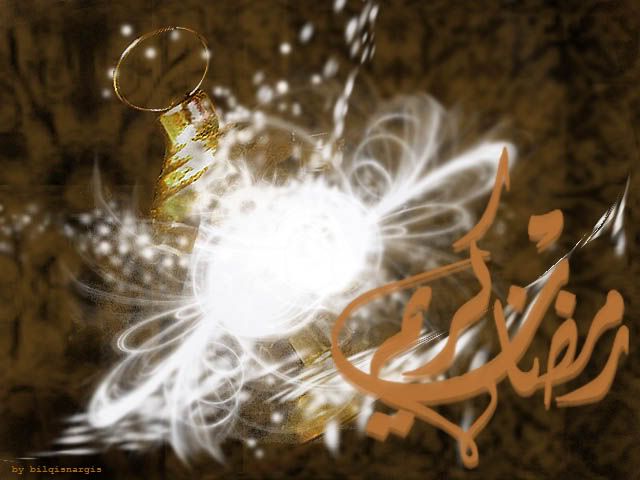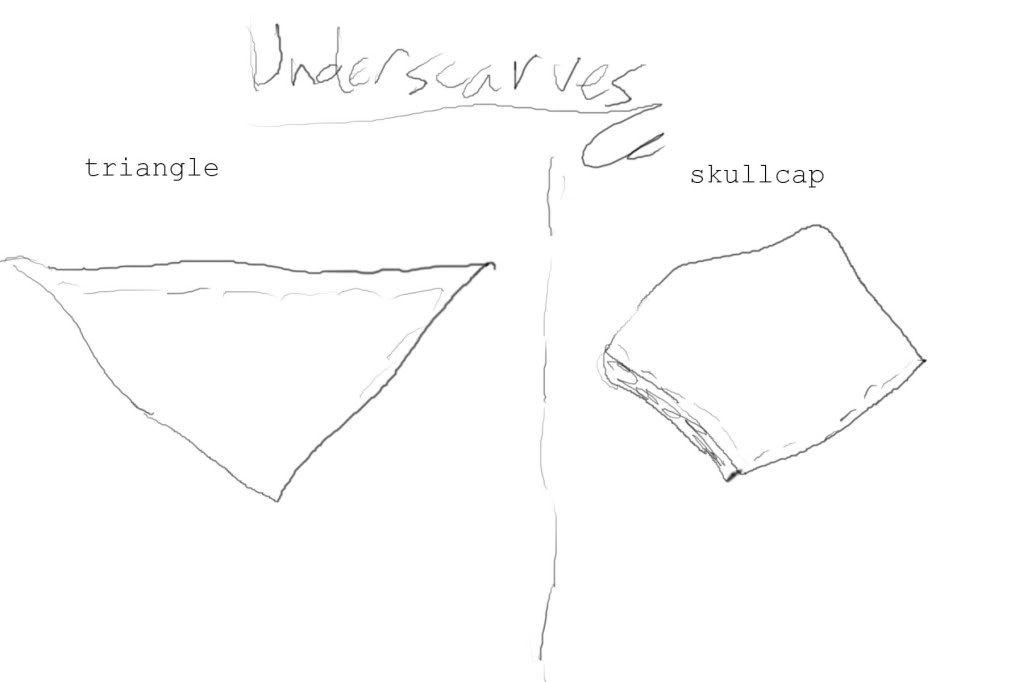Assalaam waliekum and Hello,
Welcome to bilqisnargis's Muslim Dress FAQ!!!
Ever wondered about that cozy worn bed sheet yet you didnt want to throw it away.
Maybe it can go towards a nice light prayer outfit.
Or you need to alter your abayas or find some helpful tips on sewing stuff.
In this thread, I want to focus on Muslim attire and show ppl how to sew their own stuff.
Inshallaah if you have any questions or posts feel free post them.
Some insight on Hijab:
First of all, I'm not an Islamic scholar however I do have Ibn Katheer taksers on the meanings of the ayats. In this ayat, the term "hijab" is the correct Islamic manner of dress and ways a Muslim woman carries herself outside her home. Also as you may have heard, it is used nowadays to describe the Muslim woman's dress, particularly her head covering. Muslim women really observe Hijab, not wear Hijab b/c there is no set dress code on the type of clothes or style. The Muslim women of the Prophet's time made clothes from blankets, curtians or whatever they had to cover themselves properly. However the clothes must be:
1)Loose no tight stuff unless its under clothing
2)Opaque, no skin, body part or hair showing through the material
3)No extremely flashy, attention grabbing colors
4)No jewelry showing except for the oblivious like rings
Manners of Hijab
1)Avoiding men who are not related to them
2)Being shy (meaning not showing out in front of men by talking loud or acting out)
3)Being quiet (avoiding wearing things that make noise when they walk like anklets and high-heels( or any shoes) that click on hard surfaces)
4) If the Muslim woman has to deal with non related men (like shopping or business) that she tries not to be in their presence too long and handles her business.
Ex: When I go to the store, I dont hang around the male clerks after they have helped me find what I came to get.
The Quran is the Laws of Allaah SWT however Muslims have Muhammad pbuh as the best of examples to learn how to fulfill the Laws through the Ahadiths.
And tell the believing women to lower their gaze (from looking at forbidden things), and protect their private parts (from illegal sexual acts, etc.) and not to show off their adornment except only that which is apparent (like palms of hands or one eye or both eyes for necessity to see the way, or outer dress like veil, gloves, head-cover, apron, etc.), and to draw their veils all over Juyubihinna (i.e. their bodies, faces, necks and bosoms, etc.) and not to reveal their adornment except to their husbands, their fathers, their husband's fathers, their sons, their husband's sons, their brothers or their brother's sons, or their sister's sons, or their (Muslim) women (i.e. their sisters in Islâm), or the (female) slaves whom their right hands possess, or old male servants who lack vigour, or small children who have no sense of the shame of sex. And let them not stamp their feet so as to reveal what they hide of their adornment. And all of you beg Allâh to forgive you all, O believers, that you may be successful. (An-Nur 24:31)
In this ayat, Allaah orders the believing women to distinguish themselves from the women of the Jahiliyyah (the time before Islam, also called the Time of Ignorance) and the deeds of the pagan women. The reason behind this ayat was b/c Asma (wife of Muhammad pbuh) women were visiting her and they were putting themselves on display by showing their chest and forelocks along with revealing their anklets.
Asma' said: How ugly this is!!!
Then this ayat was revealed.
The women before Islam would use the veil to heighten their awrah (Arabic for parts that need to be covered or protected), not for covering it. A woman's awrah is her whole body and it has to be covered except for the hands and face. They would walk in front of men that they were not related to with their awrahs showing. They would attract men by stamping their feet when they walk b/c they wore anklets that jingled. Muslim women are also not supposed to show their adornments in front of Jewish and Christian women b/c those women may go and describe the Muslim woman to their husbands.
Also this ayat is supported by ayat 33:59
O Prophet! Tell your wives and your daughters and the women of the believers to draw their cloaks (veils) all over their bodies (i.e.screen themselves completely except the eyes or one eye to see the way). That will be better, that they should be known (as free respectable women) so as not to be annoyed. And Allâh is Ever OftForgiving, Most Merciful. (Al-Ahzab 33:59)
So I hope this is helpful to you, please let me know if you have any questions.
Welcome to bilqisnargis's Muslim Dress FAQ!!!
Ever wondered about that cozy worn bed sheet yet you didnt want to throw it away.
Maybe it can go towards a nice light prayer outfit.
Or you need to alter your abayas or find some helpful tips on sewing stuff.
In this thread, I want to focus on Muslim attire and show ppl how to sew their own stuff.
Inshallaah if you have any questions or posts feel free post them.
Some insight on Hijab:
First of all, I'm not an Islamic scholar however I do have Ibn Katheer taksers on the meanings of the ayats. In this ayat, the term "hijab" is the correct Islamic manner of dress and ways a Muslim woman carries herself outside her home. Also as you may have heard, it is used nowadays to describe the Muslim woman's dress, particularly her head covering. Muslim women really observe Hijab, not wear Hijab b/c there is no set dress code on the type of clothes or style. The Muslim women of the Prophet's time made clothes from blankets, curtians or whatever they had to cover themselves properly. However the clothes must be:
1)Loose no tight stuff unless its under clothing
2)Opaque, no skin, body part or hair showing through the material
3)No extremely flashy, attention grabbing colors
4)No jewelry showing except for the oblivious like rings
Manners of Hijab
1)Avoiding men who are not related to them
2)Being shy (meaning not showing out in front of men by talking loud or acting out)
3)Being quiet (avoiding wearing things that make noise when they walk like anklets and high-heels( or any shoes) that click on hard surfaces)
4) If the Muslim woman has to deal with non related men (like shopping or business) that she tries not to be in their presence too long and handles her business.
Ex: When I go to the store, I dont hang around the male clerks after they have helped me find what I came to get.
The Quran is the Laws of Allaah SWT however Muslims have Muhammad pbuh as the best of examples to learn how to fulfill the Laws through the Ahadiths.
And tell the believing women to lower their gaze (from looking at forbidden things), and protect their private parts (from illegal sexual acts, etc.) and not to show off their adornment except only that which is apparent (like palms of hands or one eye or both eyes for necessity to see the way, or outer dress like veil, gloves, head-cover, apron, etc.), and to draw their veils all over Juyubihinna (i.e. their bodies, faces, necks and bosoms, etc.) and not to reveal their adornment except to their husbands, their fathers, their husband's fathers, their sons, their husband's sons, their brothers or their brother's sons, or their sister's sons, or their (Muslim) women (i.e. their sisters in Islâm), or the (female) slaves whom their right hands possess, or old male servants who lack vigour, or small children who have no sense of the shame of sex. And let them not stamp their feet so as to reveal what they hide of their adornment. And all of you beg Allâh to forgive you all, O believers, that you may be successful. (An-Nur 24:31)
In this ayat, Allaah orders the believing women to distinguish themselves from the women of the Jahiliyyah (the time before Islam, also called the Time of Ignorance) and the deeds of the pagan women. The reason behind this ayat was b/c Asma (wife of Muhammad pbuh) women were visiting her and they were putting themselves on display by showing their chest and forelocks along with revealing their anklets.
Asma' said: How ugly this is!!!
Then this ayat was revealed.
The women before Islam would use the veil to heighten their awrah (Arabic for parts that need to be covered or protected), not for covering it. A woman's awrah is her whole body and it has to be covered except for the hands and face. They would walk in front of men that they were not related to with their awrahs showing. They would attract men by stamping their feet when they walk b/c they wore anklets that jingled. Muslim women are also not supposed to show their adornments in front of Jewish and Christian women b/c those women may go and describe the Muslim woman to their husbands.
Also this ayat is supported by ayat 33:59
O Prophet! Tell your wives and your daughters and the women of the believers to draw their cloaks (veils) all over their bodies (i.e.screen themselves completely except the eyes or one eye to see the way). That will be better, that they should be known (as free respectable women) so as not to be annoyed. And Allâh is Ever OftForgiving, Most Merciful. (Al-Ahzab 33:59)
So I hope this is helpful to you, please let me know if you have any questions.




